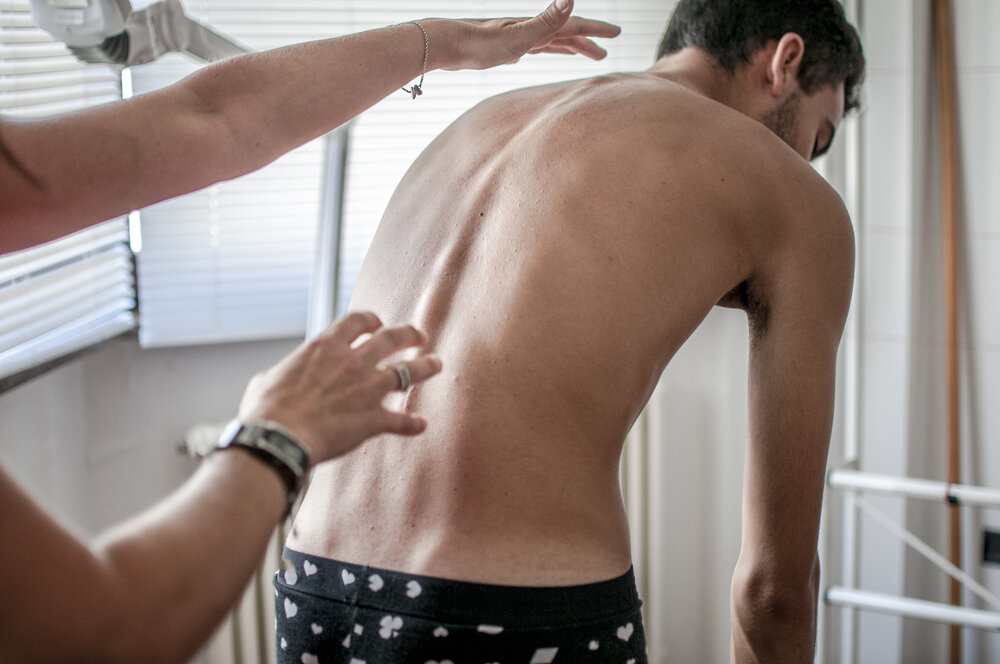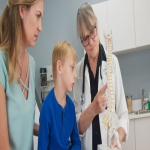Bracing and spinal fusion have been two major treatments for scoliosis for decades, although patients are increasingly looking and choosing less invasive options, as a growing research force sheds new light on this difficult situation.
Particular attention was paid to massage therapy for its ability to reduce scoliosis-related chronic back pain. A competent massage therapist can use a combination of massage strokes, continuously pressing, positioning and stretching to aid in muscle balance of the back and body and it reduces scoliosis symptoms.
Although scoliosis massage treatment can not address the cause at the bottom of the patient, medical research has found that scoliosis pain and other symptoms may provide temporary relief. The cranial sacral treatment and the deep tissue massage have two main types of massages that can help. Obviously, there are different opinions about which type of scoliosis massage is best — your experience may differ.
-
Cranial-sacral treatment: cranial-sacral therapy helps to balance your spine and increases the ability to function by mobilizing restricted tissue around and throughout the spinal column.
-
Deep tissue massage: Typically, deep tissue, assisted stretching and neuromuscular therapy help to relax the spine, increasing blood flow and lengthening areas tight, so that muscle pain can be alleviated
Appropriate cranial-sacral therapy application and deep tissue massage can give a rest to the fascia and musculoskeletal tense and thus reduce stress on a squeezed spinal column. While not an option to treat this condition, massage therapy can help to alleviate some of the pain in the back, low breath, sciatica, headaches and insomnia caused by this aberrant spinal structure.
Many patients wonder whether scoliosis needs a chiropractor's massage in particular or whether a massage therapist is suitable. Although the training and level of a chiropractic doctor and treatment by a licensed scoliosis specialist differ significantly, the qualification is based on the level of individual skill, experience in treating scoliosis patients and a personal interest in mastery. Many chiropractors actually hire professional massage therapists for specialized cases with extensive skill and experience, as part of their full-time staff.
Massage Benefits for Patients with Scoliosis
The benefit of regular massage therapy is not only pain relief. Massage offers a number of other beneficial effects for scoliosis patients that can contribute to their everyday lives.
Here Are the Benefits -
Increased Sensitivity of the Body
Lack of consciousness of your body can be an important factor in scoliosis progression. One study showed improvements in scoliosis symptoms in patients who focus on building consciousness of their body. Massage therapy lets you get closer to your body, which allows you to change movement patterns that contribute to scoliosis.
Better Sleep
For patients with scoliosis, finding a comfortable sleeping position is often difficult, with many suffering from insomnia. One case study found that twice weekly massages improved the ability of the patient to sleep in addition to relieving pain.
Better Mobility
The patient also showed greater capacity for day-to-day activities in the same study. This is because massage therapy increases the mobility of the spine and balances the back muscles, which leads to greater functionality.
Better Mental Health
Massage helps to reduce the activity of the mind and release more healing energy. It also releases tension with physical and psychological effects. One study showed immediate improvements in your mental well-being of patients who received scoliosis massage therapy.

Tense muscles stretch throughout the body during massage to allow blood to flow freely. The increased circulation helps increase flexibility and helps to cure the spinal muscles.
Scoliosis specialist near you will help you get rid of the troubles and pain. Contact Neuroscience Specialists for any kind of spine problems and disorders
**Disclaimer- Information presented here is not intended to be qualified medical advice. Nothing expressed herein creates a doctor-patient relationship.

